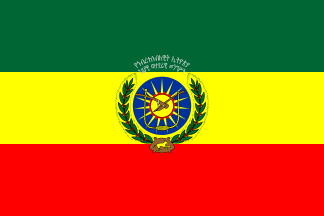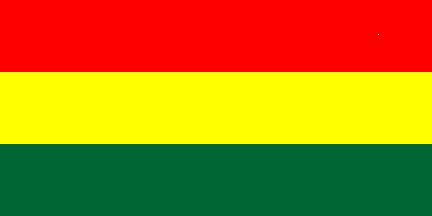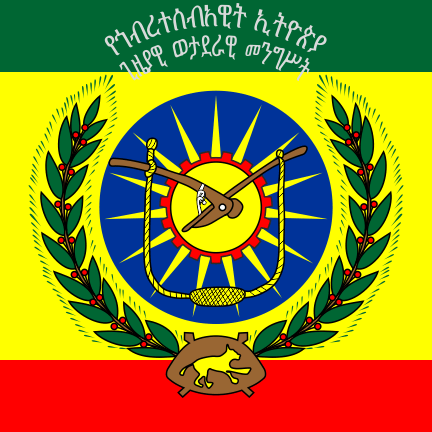 image by Željko Heimer, 25 Jan 2018
image by Željko Heimer, 25 Jan 2018State flag

Last modified: 2018-02-16 by bruce berry
Keywords: ethiopia |
Links: FOTW homepage |
search |
disclaimer and copyright |
write us |
mirrors
 image by Ivan Sache, 18 July 2000
image by Ivan Sache, 18 July 2000 image by Željko Heimer, 25 Jan 2018
image by Željko Heimer, 25 Jan 2018
State flag
See also:
Background
Soviet-backed Marxist-Leninist military junta led by Mengistu Haile Mariam deposed Emperor Haile Selassie I on 12 September 1974. The Derg, or the Co-ordinating Committee of the Armed Forces, Police and Territorial Army formally took power in Ethiopia on 28 June 1974. In 1975 it formally abolished the monarchy and embraced Communism as the official ideology. The abolition of feudalism, sweeping land reform, literacy and education became national priorities. In 1987, Mengishu Haile Mariam (Chairman of the Derg since 1977) abolished the Derg and replaced it with the People's Democratic Republic of Ethiopia, which became the country's new official name.The official flag under the Derg (Military Council) was the plain Ethiopian tricolor. Although rarely seen, the State flag contained the national emblem in the centre.
 image by Željko Heimer, 25 Jan 2018
image by Željko Heimer, 25 Jan 2018
The emblem is an example of Socialist para-heraldry, although its design
differs much from the Soviet-style emblems used by most of Socialist countries.
The plough stands for the peasants and red cogwheel for the workers, its 14 cogs
also representing the provinces of Ethiopia, which are also represented by the
equal number of sun rays. A sling made of cord is attached to the plough; it is
shaped as the letter U+1200 (first letter of Ethiopic script), to denote the
need for education, whose improvement was made one of primary goals of
revolution. The circular "shield" is surrounded by branches of two local tree
species, wild olive and African yellow tree (plant names translated to English
from Croat, as given in Whitney Smith's Flags and arms of the world [smi82]) at their crossing, a lion passant is shown in
front of a shield placed over crossed spear and sword. The weapons stand for the defence of the people; the lion probably has the same symbolism, although Smith
does not say anything about it, only mentioning that it had been used as the
emblem of Ethiopian Empire and was kept in the new regime's emblem.
Tomislav Todorovic, 25 Jan 2018